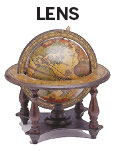How we spend to buy happiness
Would you spend $1,800 on a Prada dress or a weekend in Italy? If you said the dress, chances are you're less happy and less adventurous than the person who would spend that money on food, travel and other experiences.
A recent study at San Francisco State University that looked at the personality type and purchasing habits of nearly 100,000 people calculated that about 6 in 10 experiential spenders had overall life satisfaction versus about 4 in 10 of material ones, The Times reported. Experiential spenders also tended to get along better with others and feel less anxiety in social situations.
"Typical spending tendencies - buying more, and buying for ourselves - are ineffective at turning money into happiness," Elizabeth Dunn and Michael Norton, authors of the forthcoming book "Happy Money: The Science of Spending," wrote in The Times. "If you insist on spending money on yourself, you should shift from buying stuff (TVs and cars) to experiences (trips and special evenings out)."
The "experience" may be what pays off, but we still want our "stuff." We just expect more from it.
Luxurious trappings have always been at the auction houses Christie's and Sotheby's. But apparently masterpieces are no longer enough to lure bidders, so food and drink have become central to the experience. Before an auction of Italian masterworks by Fra Bartolommeo and Simone Martini, Sotheby's served imported guanciale in vinaigrette. And for a preview before the sale of "The Scream" by Edvard Munch, there was a smorgasbord of Norwegian specialties, reported The Times.

"You can't have a bowl of nuts on the table anymore - it has to be world-class food," Lydia Fenet, a Christie's senior vice president, told The Times. "People want what is new and different."
Christie's spent more than $1 million on food and wine in New York last year, reported The Times. It has imported chefs like Thomas Keller and Mario Batali to cook for special occasions. Sotheby's, which said it had similar expenditures, has invited Daniel Boulud and Nobu Matsuhisa, according to The Times.
"Food and drink make an auction into an event and not just a sale," Arlan Ettinger of Guernsey's auction house in New York City, told The Times.
Now we expect everything to be an "event" when we spend money, even if it's on just a chair. It's no longer enough for our furniture to be functional and beautiful; it must be emotionally satisfying, too. Hosu, a bright yellow quilted chair that is close to the ground, was designed by Patricia Urquiola for Coalesse. It evolved from research that found that wherever people commune with their hand-held digital devices, they like to lounge close to the floor, The Times reported. Ms. Urquiola described Hosu, which starts at $2,000, as "a little nest." Ergonomic is not an experience, but a "comfort zone" is.
Sometimes it's the smallest things, worthless tchotchkes and objects, that can have the biggest impact. Joshua Glenn, a writer and brand analyst, collected objects from flea markets and thrift stores and asked writers like Luc Sante and Curtis Sittenfeld to create short stories around them. Their narratives added value to the insignificant objects, some selling for as much as 2,700 percent of their value on eBay, reported The Times.
Molly Peck, an artist in New York, spent more than $100 on a bobblehead figurine, a button, a hair pick and a gaucho tray, all with stories attached.
She eventually gave her winnings away. "But I have the memory of the experience," she told The Times. "That's the whole thing. Instead of buying things, you are buying this intangible set of events."
For comments, write to nytweekly@nytimes.com.
The New York Times
















